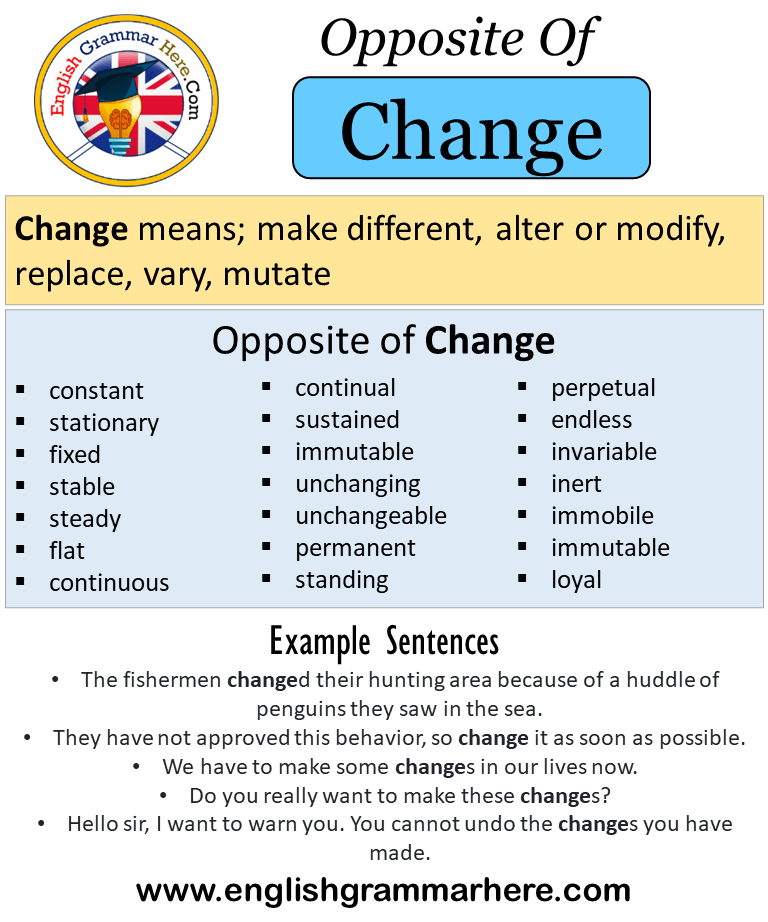

Change practitioners are very keen to help each other out and share their knowledge!.Many strongly argued that a special group should not be formed at all! Instead the change effort should be driven through the line management structure.18 people recommended asking the group to pick their own title once assembled as this would have more meaning for them and the organisation.Only 30% of the suggested titles included the word “change”.Here are the 12 most popular with the recurrence given in brackets:Īdvocate (8), Ambassadors (8), Change Agent (6), Leader (6), Champion (4), Change Advocates (4), Change Ambassador (4), Change Coach (3), Change Leaders (3), Early Adopter (3), Owner (3), Sponsor (3).Īnd here are some of the key observations from my review of all the comments:

Many of the more conventional names were suggested multiple times. synonyms for a word (or short phrase) query, but it also returns many broadly. Some are weird, some are wonderful and everyone will have their own preferences. culture are: taste, inexperience, change, cultural, and suffer. The response allowed me compile a rich list of 123 alternative names which is provided at the end of this article. Before I presented my list of alternatives I was keen to get some fresh ideas from fellow Change professionals. There was considerable change weariness following a lot of talk and not much implementation from previous change initiatives. The name began to jar with me as I felt it wouldn’t fit the culture of the organisation. Americans confront every day, we ask how psychological scientists can leverage insights from cultural psychology to shed light on. Given the demographic changes, cultural interactions and hybridizations, and shifting power dynamics that many U.S. There was talk at senior level of establishing a group of “change champions” to help lead the change initiative throughout the organisation. Americans repeatedly invoke the role of culture today as they struggle to make sense of their increasingly diverse and divided worlds.

I was recently working as the Change Management lead on a large Transformation Programme.

I felt this information should be shared back in a summary article so that the impressive list of alternative names can be of benefit to a wider group. The responses demonstrated the level of interest in the topic among fellow change practitioners. You will be able to zoom in and take note of boundary details.I posed this question a couple of months ago in the Change Consulting Group on LinkedIn and 130 people replied. The following maps are poster size maps and will not be legible if printed on standard 8.5x11 inch paper. New roads from 1995 onwards may not be shown on maps. Road data is not up-to-date and roads depicted may not exist. Refer to the current Hunting & Trapping Regulations Synopsis for more details and other boundary information including, but not limited to: Not all maps within the Hunting and Trapping Regulations synopsis are include here. The following maps represent some of the areas where portions of a management unit are open/closed during the General Open Season or areas where hunting/shooting is restricted or prohibited. Each unit is identified by number and is shown with its boundaries delineated in black dashed lines on the following maps:ĭetailed Hunting and Trapping Synopsis Maps The Province is divided into nine administrative regions, having a total of 225 management units (MU) for the purpose of game management.
#Culture change synonym download
Corrections and updates: Changes to regulations in 2022/23 or 2023/24 are updated in the online version of the synopsis and specific details are listed on the Hunting and Trapping Regulation Synopsis Corrections and Updates page.Ĭlick on an area of the map to download the Regulations Synopsis for that region:


 0 kommentar(er)
0 kommentar(er)
